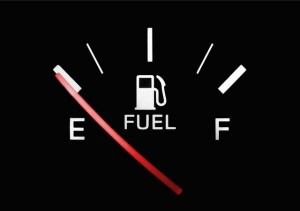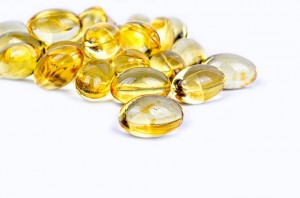
We are pleased to bring you an article by Dawn Smith-Theodore MA, MFT, CEDS – dancer, teacher, and for the last 20 a psychotherapist with a specialization in eating disorders, based in Los Angeles. She brings her knowledge and her own personal experience with these concerns to her work, and has authored the book “TuTu Thin — a Guide to Dancing Without an Eating Disorder“. She has presented internationally on this topic. This is an important concern in the dance world –please pass it on! – Jan Dunn, Dance Wellness Editor
by Dawn Smith-Theodore, MA, MFT, CEDS
When you suffer from an eating disorder, you live with the mantra, never enough. Whether it’s the number on the scale that could always be lower, or feeling as though you can never get enough food when binging, or when you believe you can never exercise enough, this concept remains a familiar thread in the life of someone who suffers from an eating disorder.
There is always someone better standing next to you in the mirror—someone with a better physique or a higher extension or more perfect feet. The critical mind works overtime, and can inhibit dancers from being able to perform their best at auditions and even in class. Not all dancers develop eating disorders, but research shows that they are 20 times more likely to than the general population.
Many dancers struggle with either an eating disorder or disordered eating in order to achieve the body desired by teachers and choreographers. Instructors play an important role in bringing out the feelings that tell the story of dance. Dancers need constructive criticism to improve technique and strive to be the best they can, but someone who has the predisposition for an eating disorder can hear the critique as an affirmation in their head that they’re just not enough. To help a dancer recover from an eating disorder, teachers, families and even the dancer must work together to understand and address the critical voice that says, never enough.
A common theme among dancers, whether they have eating disorders, disordered eating, body image concerns, or the basic belief that it’s never enough, is that they need to control the size of their body in order to dance. Each dancer perceives a message that their ability as a dancer is not enough, and that they also must have a perfect body. Yet truth be told, it is possible to navigate through struggles with body image, eating disorders, and the boundless desire to dance.

The dance world does not create the eating disorder, but it is part of the recipe that leads to an eating disorder. It is perhaps ironic that the same certain personality types prone to developing an eating disorder (such as the perfectionist) will also pursue a dancing career. For example, someone who is a perfectionist may really like that trait about themselves, because it’s the same aspect that drives them to be as good as possible at everything they do. A hard worker does the work that’s needed to accomplish a task and be satisfied with their work, but the perfectionist will never be happy unless they’re the best.
The problem is that perfect does not exist. We are humans, so we are not perfect! This is the cycle that keeps someone with an eating disorder stuck, while they strive for the impossible dream of perfectionism.
There is a dangerous line where perfectionism becomes problematic and the dancer begins to lose perspective. The dark side of perfectionism begins when a dancer believes that they are never good enough. No matter what they do, they never measure up. The dancer who has crossed that line believes that they must never make mistakes. The feelings that ensue are those of shame and guilt, because they are not living up to the expectations of others.
They become hypercritical of themselves and always feel that they could be doing better. The thoughts become very black and white. If they aren’t perfect, they are a failure. The thoughts and drive for perfectionism is taken to the extreme, and the dancer begins to spin out of control. Dancing may no longer be enjoyable. The love that the person once had for dance starts to fade away. The occupation with weight begins to be what the dancer can control since they feel out of control in their dancing, or of what others think of them. The eating disorder is a distraction and a way to escape the fear that they won’t succeed as a dancer.
The signs of an eating disorder can be very discreet. It may be difficult to recognize an eating disorder in oneself or a loved one. It may also be easy to hide an eating disorder (at least at first) from friends and family members.
 Some Warning Signs:
Some Warning Signs:
1. Weight loss
2. Obsession with food, weight, and calories
3. Isolation from friends and family
4. Frequent trips to the bathroom after meals and snacks
5. Food disappearing from the kitchen
6. Changes in mood…extreme irritation and agitation
7. Wearing baggy clothes to cover the body
As a dancer concerned about your body, you might start a diet with the intention of losing a few pounds, but it can quickly become a downward spiral of deception. Obviously, not everyone who goes on a diet develops an eating disorder. There are many reasons someone develops an eating disorder. No one chooses to have an eating disorder – but there is a choice to recover.
Education about eating disorders is key for the dancer and their families. Early detection can be very helpful in the success or the treatment of any eating disorder. Your dance teacher and dance studio should understand the benefits of healthy body image. Since you probably spend hours at the studio, the first person to notice any changes could be your dance teacher. Many times, dancers spend more time with their dance teacher and dance friends than they do with their family and school friends. It’s important for those in the dance community to look out for one another and support a healthy lifestyle.
You can help create a healthy atmosphere by helping to educate others about the importance of a healthy self-image as a dancer. If you hear another dancer or teacher talking about diets, bad foods, or negatively about their body, try talking about how important our bodies are as dancers.
If you suspect another dancer or a loved one has an eating disorder, you want to approach them with love and curiosity. Perhaps the individual won’t admit to the problem, but they know that you are noticing and concerned. This may cause them to want to be more open with you.
Strive to be the best dancer you can be. Care for your body as it is your instrument. Proper nourishment and sleep are very important. Compete with yourself and don’t constantly compare yourself to others. Dance for the enjoyment of what you do. Allow yourself the motivation to achieve realistic expectations. Allow yourself the pleasure of recognizing your accomplishments. Being a dancer is something very special. Do not let the allure of being perfect or not enough steal your love of dance from you.
Helpful Resources:
The following organizations offer more information on eating disorders, as well as referral lists for doctors, dieticians and therapists in your area.
· Academy for Eating Disorders (AED)
· National Association of Anorexia Nervosa and Associated Disorders
· Families Empowered & Supporting Treatment of Eating Disorders (F.E.A.S.T.)
· International Association of Eating Disorders Professionals (IAEDP)
· National Eating Disorders Association (NEDA)
· Overeaters Anonymous (OA)

Dawn Smith-Theodore, MA, MFT, CEDS is a former professional dancer, studio owner for 25 years in Los Angeles, and psychotherapist for the past 20 years specializing in the treatment of eating disorders. She is the author of a book about dancers and eating disorders, “TuTu Thin… A Guide to Dancing without an Eating Disorder” featured in Dance, Pointe, and Dance Teacher Magazines. Dawn has written for Pointe Magazine and is an international speaker. Dawn is recovered from Anorexia Nervosa and feels passionate about educating the dance world to help the prevention of eating disorders. Dawn is co owner of Cross Pointe Dance and Head to Pointe Wellness Workshops for Dancers.
To learn more about Dawn and her work, visit her website.















